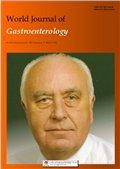Yield of alarm features in predicting significant endoscopic findings among hospitalized patients with dyspepsia
IF 4.3
3区 医学
Q1 GASTROENTEROLOGY & HEPATOLOGY
引用次数: 0
Abstract
BACKGROUND Dyspepsia is a very prevalent upper gastrointestinal tract symptoms complex. Some of these symptoms might arise from serious underlying diseases, so the promotion of evidence-based guidelines could potentially better align evaluation and treatment. AIM To determine the value of alarm features as a predictive factor for significant endoscopic findings (SEFs) among hospitalized patients presenting with dyspepsia. METHODS We conducted a retrospective case-control study including information about 6208 endoscopic procedures performed for hospitalized patients. Patients were divided into two groups, with and without SEFs, and compared to elucidate the ability of the different alarm features to predict SEFs. RESULTS During the study, 605 patients fulfilled the inclusion criteria. When the demographics and clinical characteristics of the two groups were compared, tachycardia (P < 0.05), normocytic anemia, (P < 0.05), leukocytosis (P < 0.05), and hypoalbuminemia (P < 0.05) documented on admission prior to endoscopy were strong predictors of SEFs. Among the alarm features, upper gastrointestinal bleeding, persistent vomiting, odynophagia [odds ratio (OR) = 3.81, P < 0.05; OR = 1.75, P = 0.03; and OR = 7.81, P = 0.07, respectively] were associated with SEFs. Unexplained weight loss was strongly associated with malignancy as an endoscopic finding (OR = 2.05; P < 0.05). In addition, long-term use of anti-aggregate medications other than aspirin (P < 0.05) was correlated to SEFs. CONCLUSION Novel predictors of SEFs were elucidated in this study. These parameters could be used as an adjunctive in decision making regarding performing upper endoscopy in hospitalized patients with dyspepsia.预测住院消化不良患者重要内镜检查结果的报警特征的有效性
背景消化不良是一种非常普遍的上消化道综合症状。其中一些症状可能源于严重的潜在疾病,因此推广循证指南有可能更好地协调评估和治疗。目的 确定报警特征作为消化不良住院患者重要内镜检查结果(SEFs)预测因素的价值。方法 我们进行了一项回顾性病例对照研究,其中包括为住院患者实施的 6208 例内镜手术的信息。研究人员将患者分为有 SEFs 和无 SEFs 两组,并对两组患者进行比较,以阐明不同报警特征预测 SEFs 的能力。结果 研究期间有 605 名患者符合纳入标准。对两组患者的人口统计学和临床特征进行比较后发现,内镜检查前入院时记录的心动过速(P < 0.05)、正常红细胞性贫血(P < 0.05)、白细胞增多(P < 0.05)和低白蛋白血症(P < 0.05)是预测 SEF 的有力指标。在报警特征中,上消化道出血、持续呕吐、吞咽困难[几率比(OR)= 3.81,P < 0.05;OR = 1.75,P = 0.03;OR = 7.81,P = 0.07]与SEFs相关。不明原因的体重减轻与内镜下发现的恶性肿瘤密切相关(OR = 2.05;P < 0.05)。此外,长期服用阿司匹林以外的抗聚集药物(P < 0.05)与 SEFs 相关。结论 本研究阐明了 SEFs 的新预测指标。这些参数可作为住院消化不良患者进行上内镜检查的辅助决策依据。
本文章由计算机程序翻译,如有差异,请以英文原文为准。
求助全文
约1分钟内获得全文
求助全文
来源期刊

World Journal of Gastroenterology
医学-胃肠肝病学
CiteScore
7.80
自引率
4.70%
发文量
464
审稿时长
2.4 months
期刊介绍:
The primary aims of the WJG are to improve diagnostic, therapeutic and preventive modalities and the skills of clinicians and to guide clinical practice in gastroenterology and hepatology.
 求助内容:
求助内容: 应助结果提醒方式:
应助结果提醒方式:


